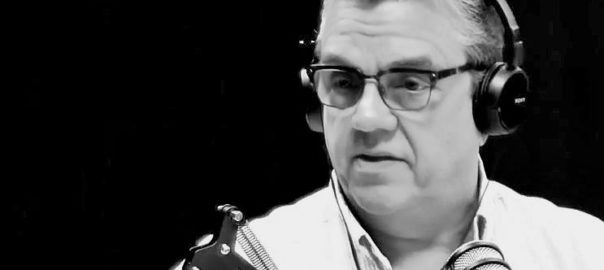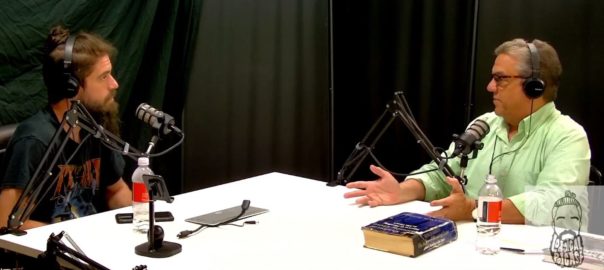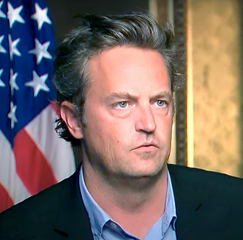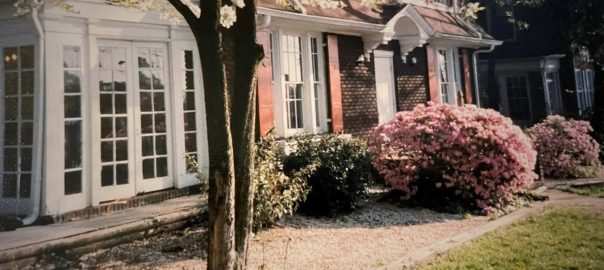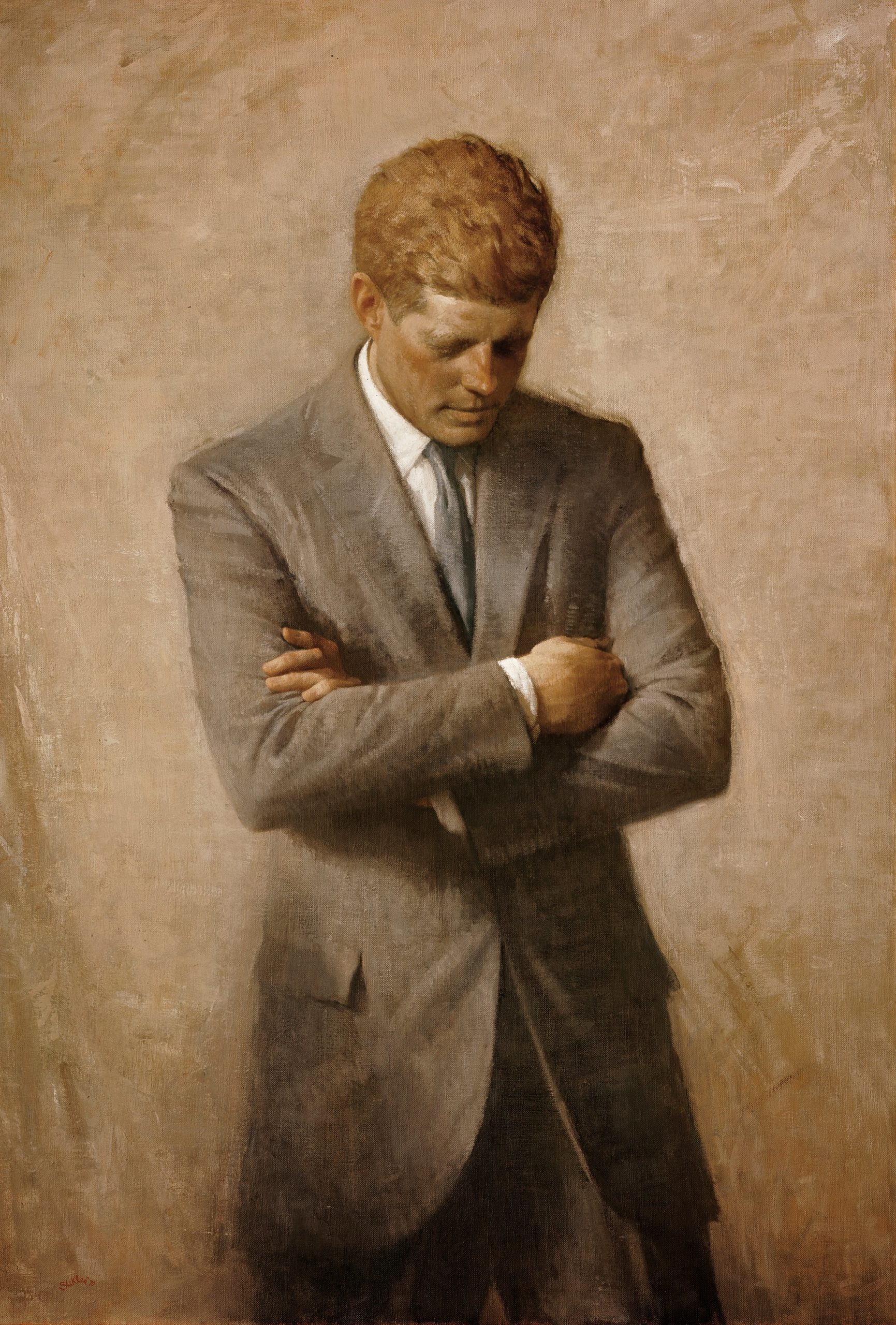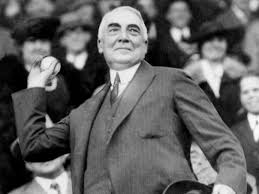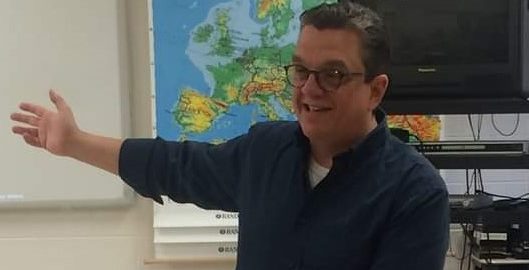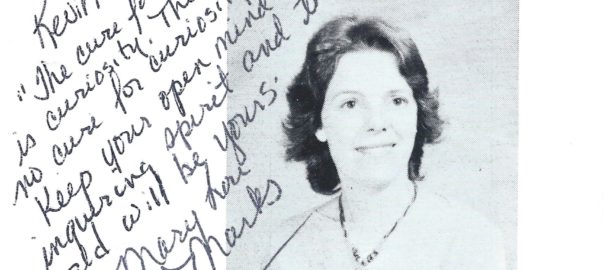I wrote this historiographical essay in 2006 in partial fulfillment of the requirements of a graduate history seminar at Murray State University in Murray, Kentucky and to satisfy the terms of my status as a James Madison Fellow. I am currently transferring all such works to American Path[o]s.
When President Warren G. Harding died in San Francisco on August 2, 1923, the country was shocked and saddened. Harding had been a popular president. Within months, however, his reputation began to deteriorate. Government investigators uncovered three major administration scandals, collectively designated “Teapot Dome,” and writers accused him of personal and official improprieties. As the years passed, Harding’s image sank so low that his two immediate successors, Calvin Coolidge and Herbert Hoover, were hesitant even to dedicate his tomb.[1]
After his death, scholarly and popular writing on Harding proceeded in three phases. The first, lasting through the 1930s, consisted primarily of scurrilous popular works that condemned every facet of Harding’s life, career, and morality. Because of these writings, and the Teapot Dome scandals, by the 1940s, many historians considered Harding the worst president in American history, a designation that, for the most part, has never changed.[2]
The first of the damaging works was Nan Britton’s The President’s Daughter.[3] Britton grew up in Marion, Ohio, Harding’s hometown. Although she was thirty years his junior, she claimed to have fallen in love with Harding when she was a teenager, a crush that she said became a love affair after she grew to adulthood.[4] According to Britton, she maintained her affair with Harding even after he entered national politics, and she conceived his child on a couch in his US Senate office.[5] After Britton’s daughter was born, Harding became president, and the affair continued, even in the White House. Britton always claimed that Harding had provided handsomely for her and the child during his lifetime. When the president died, however, Britton was penniless, and appealed to his relatives for assistance.[6] When the Hardings provided little help and tried to discredit her, Britton enlisted the support of her employer in writing a book.[7] The President’s Daughter caused a sensation. While it lauded Harding, it also portrayed him as childish and irresponsible. The release of Britton’s memoir, in the midst of the Teapot Dome investigations, did great harm to Harding’s reputation.
The President’s Daughter signaled the beginning of a series of derogatory popular accounts. One of the most critical was William Allen White’s Masks in a Pageant.[8] In Masks, White established the image of Harding as the mindless, pliable tool of big business and big oil interests, a front man maneuvered into position so that his friends could plunder the public coffers. Masks included no footnotes or other documentation. Indeed, White rarely quoted anyone, but simply opined. This lack of evidence is disturbing, considering that many of White’s allegations, such as Harding’s casual flouting of Prohibition, have become established parts of the Harding story.[9] Today, one can scarcely consult a book on Harding without finding credulous references to Masks, despite its lack of verifiability. In this respect, it is among the most important works in Harding historiography.
By 1930, so tarnished was Harding’s image that people were ready to believe almost anything about him. Sensing this, Gaston Means, a former federal agent and a brazen swindler, published The Strange Death of President Harding.[10] Means claimed that Mrs. Harding had hired him to disrupt the president’s involvement with Nan Britton and her child, and to free him from the clutches of “the gang,” members of the administration who were controlling Harding for their own purposes and destroying his presidency.[11] Though he never said it, Means implied that Florence Harding (who died in 1924) had poisoned her husband in San Francisco, to prevent the collapse of his administration and possible impeachment.[12] Like Britton’s book before it, Strange Death caused a furor. It reinforced the image, already prevalent, of a president with an out-of-control administration and personal life. Harding’s reputation sank further.
Academic historians had little to say about Harding in the first decade after his death. The sensationalist popular writers drowned out what they did say. There were occasional scholarly articles, however. In 1930, Preston Slossen became one of the first historians to consider Harding. In “Warren G. Harding: A Revised Estimate,” Slossen found that Harding was not a bad man, yet was wholly inadequate as president.[13] He credited Harding as a conciliator (a common theme among those seeking to credit him with something), but pointed out that the Teapot Dome scandals confirmed Harding’s failures of leadership.[14] A year later, Sherman Blanchard defended Harding in “President Harding: A Reappraisal.”[15] Blanchard, a rare pro-Harding voice of the time, claimed that the scandals, exaggerated in his view, had blinded people to the many accomplishments of the Harding administration. Among these were the Washington Conference, the Bureau of the Budget, and the resolution of hostilities with the Central Powers[16].
Slossen won the debate. In the same year in which Blanchard wrote his article defending Harding, Frederick Lewis Allen published Only Yesterday: An Informal History of the Nineteen-Twenties.[17] Although the book dealt with many issues other than Harding, Only Yesterday played an important role in Harding’s increasingly negative historiography. Allen portrayed Harding as an amiable, handsome bumbler, who was too weak-willed to resist his deceitful subordinates or his own libido.[18] Worse yet, Allen considered Gaston Means’s tales about poison to be “very plausible.”[19] Unfortunately for Harding’s image, Only Yesterday was a success, and was widely read. The book remains in print today.
In 1939, Samuel Hopkins Adams, relying on the earlier Harding “research,” along with his own, published Incredible Era: The Life and Times of Warren Gamaliel Harding.[20] Adams’s book painted a sorry picture, as the kind and well-liked Harding stumbled into national politics and into the presidency, a role for which he was woefully unprepared. Harding’s death, suggested Adams, came just in time to rescue from disgrace this man who, had he stayed at home in an environment he could grasp, would have been mourned by all who knew him.[21] Few if any books have done greater damage to Harding’s image than Adams’s did. Robert Ferrell said that it “became the accepted account of the Harding era.”[22] Likewise, Robert K. Murray stated that the work became one of the “primary transmission belt[s] by which all the various slanted accounts and oft-repeated myths were carried to later generations.”[23]
The second phase of Harding Scholarship included the years between the publication of Incredible Era, in 1939, and the mid-1960s. During those years, some historians pressed for a more scholarly appraisal of Harding, but frustrating them, initially, was the belief that Harding’s wife had burned nearly all of his papers after his death. The most important contribution during this period was Frederic L. Paxson’s treatment of the Harding administration in American Democracy and the World War.[24] Paxson implied that the qualities that made Harding a good man—loyalty, peacefulness, trust—made him a bad president.[25] He also reversed a quarter-century of caricature by asserting that Harding’s leadership was improving by the time of his death.[26] In addition, Paxson laid some of the foundation for the revisionism of the 1960s by verifying a rumor that had circulated for years that the Harding Memorial Association in Marion possessed a cache of Harding’s papers.[27]
Despite Paxson’s findings, the Harding Memorial Association continued, for many years, to deny access to the archive. However, the public revelation that the papers existed energized the historical community to take a more sophisticated view of Harding. In “The Origins of the Teapot Dome Investigation,” Historian Burl Noggle found Harding indecisive, and believed the president’s inability to sort through advice had been his undoing.[28] Five years later, as the 1965 Harding centennial approached, Noggle issued a challenge to the profession, one that presaged the third phase of Harding historiography. Conceding that the “prevailing stereotype” of Harding may have been accurate, Noggle declared that it was the job of historians to look beyond the generalizations of the past and either verify or revise that stereotype.[29] “Even Harding,” he said, should be subject to historical inquiry.[30]
A second-phase researcher who did find the stereotypes accurate was California Western professor Sidney Warren. In “Harding’s Abdication from Leadership,” Warren not only condemned Harding’s administration for graft, but also disparaged the few modest accomplishments, such as the Washington Disarmament Conference, with which others had traditionally credited him.[31] Warren also condemned the American public of the 1920s for electing such an inadequate president, and for “its perverted attitude towards the scandals,” alleging that Americans reserved their disdain for the government investigators of Teapot Dome, rather than for “the men who had dragged the nation down into the nadir of perfidy.”[32] Warren’s article, reminiscent of the works of the 1930s, was one of the most condemnatory in modern times.
In 1963, The Harding Memorial Association transferred custody of the Harding Papers to the Ohio Historical Society. The following year, the third and continuing phase of Harding scholarship began when the Society opened the papers to historians. The first major work to emerge following the opening of the archive was Andrew Sinclair’s The Available Man: The Life behind the Masks of Warren G. Harding.[33] Sinclair portrayed Harding as a wily and capable politician who understood himself but little else. He had strong points, suggested Sinclair, such as his conciliatory nature and a good personality, but he was unprepared for the White House, and thus it overwhelmed him.[34] Sinclair also echoed a conviction, common among even sympathetic scholars, that Harding should never have been president.[35]
Access to the Harding Papers emboldened historians to expose the scurrilous writings of the past. In “The Harding Muckfest,” Randolph Downes chronicled dozens of Harding portrayals that he considered unfair.[36] Lamenting that “there is much we must unlearn lest we become hypnotized with a false learning that is worse then ignorance,” Downes concluded, “It is high time for a painstakingly honest and scholarly appraisal of the life of Warren G. Harding.”[37] This strong statement came to embody the direction of most modern Harding research.
The most famous modern work on Harding is also the most controversial. In 1963, just as the Harding papers arrived in Columbus, Massachusetts writer Francis Russell, who was in Marion to research Harding, inadvertently discovered a large collection of sexually explicit love letters written by Harding to Carrie Phillips, the wife of one of his best friends.[38] When word spread that Russell intended to quote from the letters in his planned biography, the Harding Memorial Association and the Ohio Historical Society sued him and obtained a court order enjoining the publication of the letters in any form.[39] By 1968, Russell had finished his book but remained under the injunction. In frustration, he decided to publish The Shadow of Blooming Grove: Warren G. Harding in his Times, deleting the content of the Phillips letters, and replacing it, character-by-character, with dashes.[40] This unique solution brought Shadow great publicity, though some historians, notably Robert K. Murray, saw the dashes as a cynical publicity stunt.[41]
Russell structured Shadow around “four mysteries” of Harding’s life: his alleged affairs with Nan Britton, Carrie Phillips, and other women; his alleged poisoning by his wife; the fate of his papers; and, most important to Russell, the long-standing rumor that Harding had black ancestry.[42] Russell believed that the rumor of mixed race (which surfaced in a sordid manner during the 1920 campaign), was a “shadow” that haunted Harding all his life, influencing his self-confidence and interpersonal relationships.[43] Russell’s efforts disappointed many academic historians. He portrayed Harding as a pitiable figure—a kind and lonely man who was out of his depth. There was little documentation and little evidence of the use of Harding’s papers. The book was more than 600 pages long, but scholars found that it focused too much on the tawdry aspects of Harding’s life, and ignored his policies. Robert K. Murray complained, “There was more on Nan Britton and her alleged wrigglings in a White House closet than on the nation’s South American policy.”[44] In “Historiography and Warren G. Harding,” Ohio Wesleyan Professor David Jennings added, “Readers who enjoy the center spread of Playboy will be content with the amazing amount of space devoted to sex.”[45] In the same article, Jennings called for a new Harding historiography, based solidly on the newly opened archive. He concluded, “Historians should take Harding from the bedrooms, smoke-filled rooms, card tables, golf courses, and drinking parties and give greater consideration to public policy, administration, and philosophy of government—information about which can be readily found in the Harding Papers.”[46]
As if in answer to Jennings, in the 1970s, several historians produced new biographies of Harding. The most important was Robert K. Murray’s The Harding Era. Coming two years after the publication of The Shadow of Blooming Grove, Murray sought to distance himself from Russell and all other writers who focused primarily on sex and scandal.[47] Murray concluded that Harding did a decent job as President, better in terms of accomplishments than many others did.[48] He was far from the worst President; in fact, suggested Murray, few have accomplished so much in so little time.[49] Still, Murray’s was a balanced approach, and, like others before him, he conceded that Harding probably should never have been president.[50]
In addition to biographies, the 1970s brought an increased number of scholarly Harding articles. In “Who was Warren G. Harding?” Louis W. Potts wrote a detailed survey of Harding scholarship, concluding that many historians had ignored the modern efforts at revisionism. Potts did not close on a hopeful note. “One wonders,” he wrote, “the worth of detailed studies if generalists persist in using older, more comfortable concepts, explanations, and modes of expression.”[51] He did predict, however, that historians would remain interested in Harding for as long as they continued to view the 1920s as “the dawn of modern America.”[52]
By the mid-1970s, historians were providing more Harding policy research. For years, ever since the papers controversy, many articles had focused on historiographical concerns. New articles combined historiographical commentary with substantive policy analysis. In “Was There a ‘New’ Harding?” Robert Accinelli resurrected the Paxson thesis of the late 1940s, which stated that Harding, by the time of his death, was maturing in office.[53] In the context of the debate over US involvement in the World Court, Accinelli found that Harding had, indeed, “grown in determination and initiative,” but remained conciliatory in other critical areas, notably his response to the uncooperative Senate.[54] Two years later, Howard A. DeWitt praised Accinelli’s article in “The ‘New’ Harding and American Foreign Policy.”[55] DeWitt showed that Harding was a clever and principled centrist and realist, whose pragmatism enabled him to outmaneuver, and even neutralize, the powerful isolationist Senator Hiram W. Johnson.[56] As with most modern articles about Harding, DeWitt concluded with a call for historians to dispense with “outdated stereotypes,” and to develop a new and more balanced Harding historiography.[57]
Heeding the calls for new historiography, in 1996, Robert Ferrell undertook to analyze the various deficiencies in Harding’s image, including the political scandals and myths. The result was The Strange Deaths of President Harding, its title a sardonic swipe at Gaston Means. Ferrell found that Harding was by no means the worst president, and that historians have unfairly evaluated him. “Harding has deserved better from history,” said Ferrell. “His fate does not seem at all fair.”[58] Ferrell began with a new look at Harding’s physical death. Contrary to the official finding that the president died of a stroke, Ferrell determined that Harding succumbed to heart disease, worsened by incompetent medical care.[59] He found nothing to substantiate the poisoning suggested by Gaston Means.[60] Ferrell then chronicled the demise of Harding’s reputation as a good and compassionate leader. He determined that White, Adams, Britton, and the seemingly endless string of scandals and scandalmongers all combined to cause this second, and unjustified, “death.” Ferrell seemed to ask why Harding is the only president whom historians judge solely by his failures.
In the same year in which Ferrell published Strange Deaths, Gary Alan Fine, a University of Georgia sociologist, brought a new perspective to Harding research with the publication of “Reputational Entrepreneurs and the Memory of Incompetence.”[61] One of the most innovative works in Harding historiography, “Reputational Entrepreneurs” sought to explain, from a sociological perspective, why despite his concrete achievements, people remember the humble Harding as the worst president in American history. Fine asserted that Harding’s supporters helped to destroy his reputation when they failed to rally to his posthumous defense.[62] This allowed “reputational entrepreneurs,” those with a political stake in his ruin, to seize control of his legacy.[63] Harding’s enemies then exaggerated his personal flaws, retroactively imposed that image on his policies, and cemented the image of the worst president. Fine concluded that not only celebrities and politicians are subject to this kind of social profiteering; if conditions are right, ordinary people, too, he said, can fall victim to reputational manipulation.[64]
In surveying Harding historiography, some clear themes emerge. To their discredit, Professional historians remained conspicuously silent during the early phase, abandoning the field to sensationalist amateurs. Non-historians set the agenda—to the detriment of Harding’s legacy. Thus, while some historiographies can safely ignore popular accounts, Harding historiography would be incomprehensible without an understanding of them. Opportunists such as Britton and Means, and bitter social critics such as White and Adams, so firmly established Harding’s low popular image that they shifted the burden of proof to the shoulders of any researcher who might attempt to defend Harding.
When professional historians turned their attention to Harding, after World War II, they found that they had few resources with which to work. Without access to the Harding Papers, they did little to dispel the image created in the earlier decades. Historians such as Paxson and Noggle could upbraid the profession for its shoddy neglect of an American president, but the popular press continued to repeat the old stories from the 20s, and always there were more politically motivated detractors, such as Sidney, to lend scholarly validation to them.
The modern era of Harding scholarship continues. It began with the opening of the Harding papers and with those who, like Sinclair and Russell, thought they were reconsidering Harding, only to resurrect new Harding scandals and perpetuate the old ones. Finally, however, scholarship is focusing less on professional soul-searching about past neglect of Harding, and more on his substantive successes and failures. Scholars such as Murray, Ferrell, Accinelli, and others have at least initiated a conversation that may lead to a more balanced assessment of the “worst” American president.
Bibliography
Accinelli, Robert D. “Was there a ‘New’ Harding? Warren G. Harding and the World Court Issue, 1920 –1923.” Ohio History 84 (Autumn 1975): 168 –81.
Adams, Samuel Hopkins. Incredible Era: The Life and Times of Warren Gamaliel Harding. New York: Houghton Mifflin, 1939.
Allen, Frederick Lewis. Only Yesterday: An Informal History of the Nineteen-Twenties. New York: Harper & Brothers, 1931.
Blanchard, Sherman. “President Harding: A Reappraisal.” Current History 35 (October 1931): 41 –47.
Britton, Nan. The President’s Daughter. New York: Elizabeth Ann Guild, 1927.
DeWitt, Howard A. “The ‘New’ Harding and American Foreign Policy: Warren G. Harding, Hiram W. Johnson, and Pragmatic Diplomacy.” Ohio History 86 (Spring 1977): 96 –114.
Downes, Randolph C. “The Harding Muckfest: Warren G. Harding—Chief Victim of the Muck-for-Muck’s-Sake Writers and Readers.” Northwest Ohio Quarterly 39 (Summer 1967): 5 –37.
Ferrell, Robert. The Strange Deaths of President Harding. Columbia, MO: University of Missouri Press, 1996.
Fine, Gary Alan. “Reputational Entrepreneurs and the Memory of Incompetence: Melting Supporters, Partisan Warriors, and Images of President Harding.” American Journal of Sociology 101, no. 5 (1996): 1159 –93.
Jennings, David H. “Historiography and Warren G. Harding.” Ohio History 78 (Winter 1969): 46 –49.
Means, Gaston. The Strange Death of President Harding: From the Diaries of Gaston B. Means, a Department of Justice Investigator. With May Dixon Thacker. New York: Guild Publishing, 1930.
Murray, Robert K. The Harding Era: Warren G. Harding and His Administration. Minneapolis: University of Minnesota Press, 1969.
Noggle, Burl. “The Origins of the Teapot Dome Investigation.” Mississippi Valley Historical Review 44 (September 1957): 237 –56.
———. Teapot Dome: Oil and Politics in the 1920’s. Baton Rouge, LA: Louisiana State University Press, 1962.
Paxson, Frederic. American Democracy and the World War. Vol. 3, Postwar Years: Normalcy, 1918 –1923. Berkeley, CA: University of California Press, 1948.
Potts, Louis W. “Who was Warren G. Harding?” Historian 36 (August 1974): 621 –45.
Russell, Francis. The Shadow of Blooming Grove: Warren G. Harding in His Times. New York: McGraw-Hill, 1968.
Schlesinger, Arthur M. “Our Presidents: A Ranking by 75 Historians.” New York Times Magazine, 29 July 1962, 12 –13, 40 –43.
Sinclair, Andrew. The Available Man: The Life behind the Masks of Warren Gamaliel Harding. New York: Macmillan, 1965.
Slossen, Preston W. “Warren G. Harding: A Revised Estimate.” Current History 33 (November 1930): 174 –79.
Warren, Sidney. “Harding’s Abdication from Leadership.” Current History 39 (October 1960): 203 –07, 219.
White, William Allen. Masks in a Pageant. New York: Macmillan, 1928
[1] Francis Russell, The Shadow of Blooming Grove: Warren G. Harding in His Times (New York: McGraw-Hill, 1968), viii, 633, 640.
[2] Arthur M. Schlesinger, “Our Presidents: A Rating by 75 Historians,” New York Times Magazine, 29 July 1962, 12-13, 40-43.
[3] Nan Britton, The President’s Daughter (New York: Elizabeth Ann Guild, 1927).
[4] Britton, The President’s Daughter, 5.
[5] Britton, The President’s Daughter, 75.
[6] Britton, The President’s Daughter, 323.
[7] Britton, The President’s Daughter, 424.
[8] William Allen White. Masks in a Pageant (New York: Macmillan, 1928).
[9] White, Masks, 408.
[10] Gaston B. Means. The Strange Death of President Harding: From the Diaries of Gaston B. Means, A Department of Justice Investigator, With May Dixon Thacker (New York: Guild Publishing, 1930).
[11] Means, The Strange Death of President Harding, 130, 248.
[12] Means, The Strange Death of President Harding, 260 –65.
[13] Preston Slossen, “Warren G. Harding: A Revised Estimate,” Current History 33 (1930):174 –79.
[14] Slossen, “Warren G. Harding,” 179, 177 –78.
[15] Sherman Blanchard, “President Harding: A Reappraisal,” Current History 35 (1931): 41 –47.
[16] Blanchard, “President Harding,” 45 –46.
[17] Frederick Lewis Allen, Only Yesterday: An Informal History of the Nineteen-Twenties (New York: Harper & Brothers, 1931).
[18] Allen, Only Yesterday, 105 –07.
[19] Allen, Only Yesterday, 112.
[20] Samuel Hopkins Adams. Incredible Era: The Life and Times of Warren Gamaliel Harding (New York: Houghton Mifflin, 1939).
[21] Adams, Incredible Era, 441 –42.
[22] Robert H. Ferrell, The Strange Deaths of President Harding (Columbia, MO: University of Missouri Press, 1996), 149.
[23]Robert K. Murray, The Harding Era: Warren G. Harding and His Administration (Minneapolis: University of Minnesota Press, 1969), 523.
[24] Frederic L. Paxson, American Democracy and the World War, vol. 3, Postwar Years: Normalcy, 1918 –1923 (Berkeley, CA: University of California Press, 1948).
[25] Paxson, American Democracy, 384 –88.
[26] Paxson, American Democracy, 388.
[27] Paxson, American Democracy, 371; Louis W. Potts, “Who was Warren G. Harding?” Historian 36 (August 1974): 631n37.
[28] Burl Noggle, “The Origins of the Teapot Dome Investigation,” Mississippi Valley Historical Review 44 (September 1957): 253.
[29] Burl Noggle, Teapot Dome: Oil and Politics in the 1920’s, (Baton Rouge, LA: Louisiana State University): 224.
[30] Noggle, Teapot Dome: Oil and Politics, 224.
[31] Sidney Warren, “Harding’s Abdication from Leadership,” Current History 39 (October 1960): 206.
[32] Warren, “Harding’s Abdication,” 207.
[33] Andrew Sinclair, The Available Man: The Life behind the Masks of Warren G. Harding (New York: Macmillan, 1965).
[34] Sinclair, The Available Man, 298 –99.
[35] Sinclair, The Available Man, 299.
[36] Randolph C. Downes, “The Harding Muckfest: Warren G. Harding—Chief Victim of the Muck-for-Muck’s Sake Writers and Readers,” Northwest Ohio Quarterly 39 (Summer 1967): 5 –37.
[37] Downes, “The Harding Muckfest,” 34.
[38] Russell, The Shadow of Blooming Grove, 650 –53.
[39] Russell, The Shadow of Blooming Grove, 658.
[40] Russell, The Shadow of Blooming Grove, ix.
[41] Murray, The Harding Era, 531.
[42] Russell, The Shadow of Blooming Grove, xiv.
[43] Russell, The Shadow of Blooming Grove, 26, 372.
[44] Murray, The Harding Era, 531.
[45] David H. Jennings, “Historiography and Warren G. Harding,” Ohio History 78 (Winter 1969): 47.
[46] Jennings, “Historiography,” 48.
[47] Murray, The Harding Era, 531 –33.
[48] Murray, The Harding Era, 533 –37.
[49] Murray, The Harding Era, 536 –37.
[50] Murray, The Harding Era, 536.
[51] Potts, “Who was Warren G. Harding?” 645.
[52] Potts, “Who was Warren G. Harding?” 645.
[53] Robert D. Accinelli, “Was there a ‘New’ Harding? Warren G. Harding and the World Court Issue, 1920 –1923,” Ohio History 84 (Autumn 1975): 168, 181.
[54] Accinelli, “Was there a ‘New’ Harding?” 181.
[55] Howard A. DeWitt, “The ‘New’ Harding and American Foreign Policy: Warren G. Harding, Hiram W. Johnson, and Pragmatic Diplomacy,” Ohio History 86 (Spring 1977): 96.
[56] DeWitt, “The ‘New’ Harding,” 113 –14.
[57] DeWitt, “The ‘New’ Harding,” 114.
[58] Ferrell, The Strange Deaths of President Harding, vii.
[59] Ferrell, The Strange Deaths of President Harding, 4 –9.
[60] Ferrell, The Strange Deaths of President Harding, 30 –49. Ferrell devoted an entire chapter to the poison theory.
[61] Gary Alan Fine, “Reputational Entrepreneurs and the Memory of Incompetence: Melting Supporters, Partisan Warriors, and Images of President Harding,” American Journal of Sociology 101, no. 5 (1996): 1159 –93.
[62] Fine, “Reputational Entrepreneurs,” 159, 1177 –82.
[63] Fine, “Reputational Entrepreneurs,” 1162 –64.
[64] Fine, “Reputational Entrepreneurs,” 1188.
